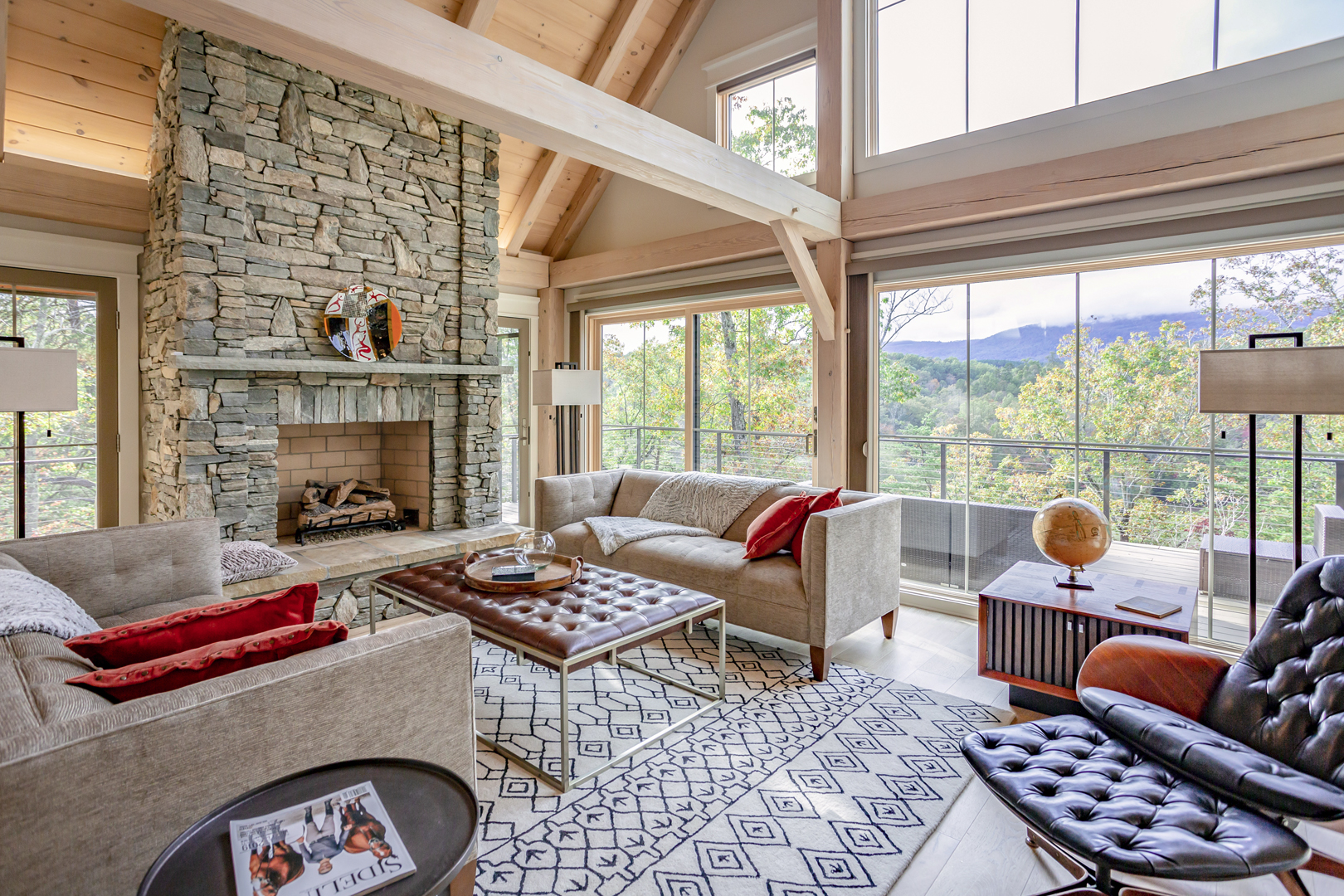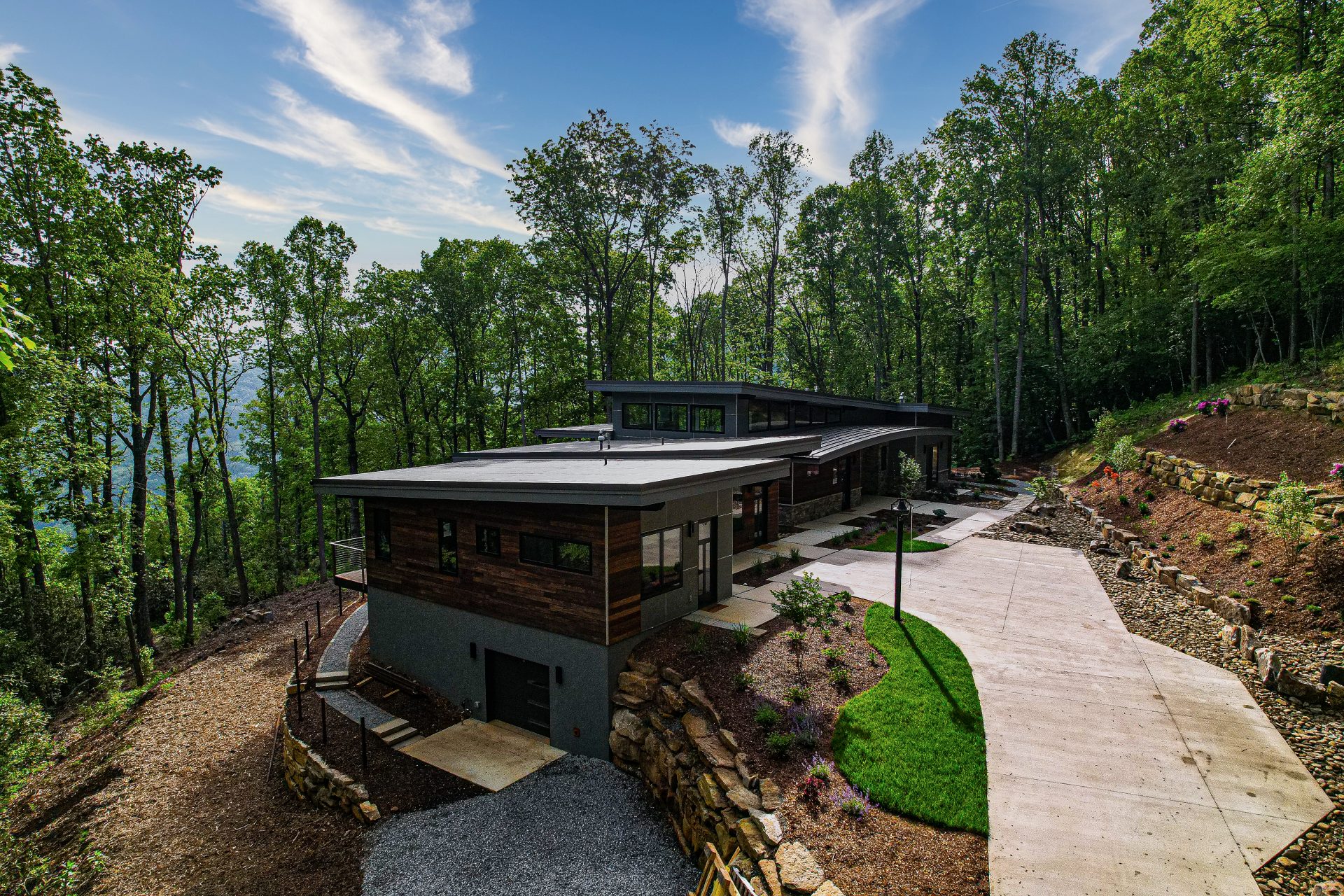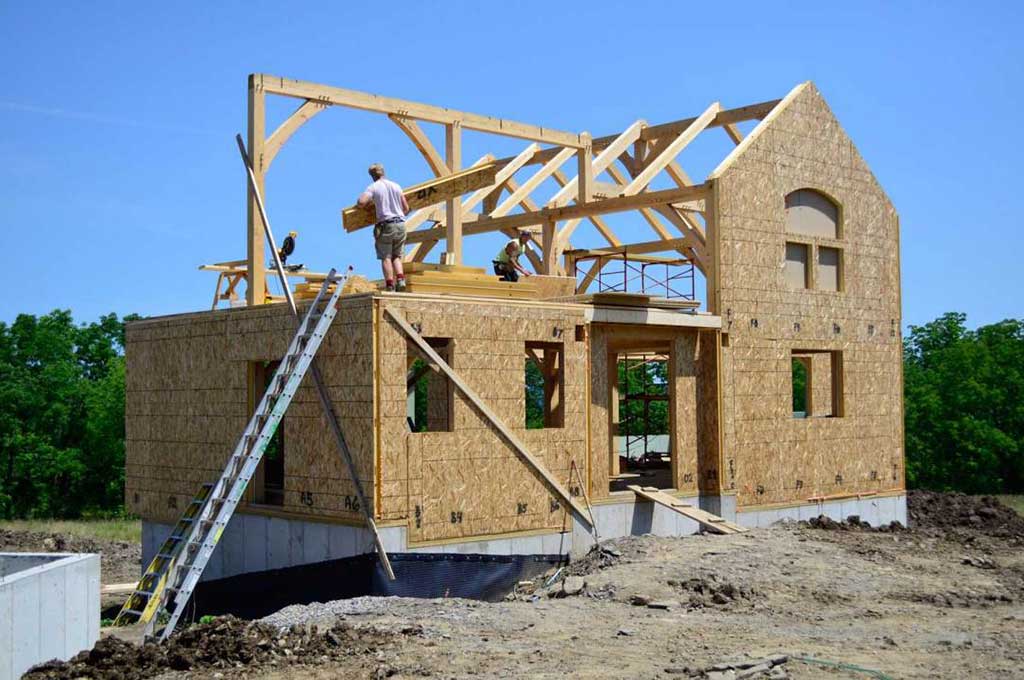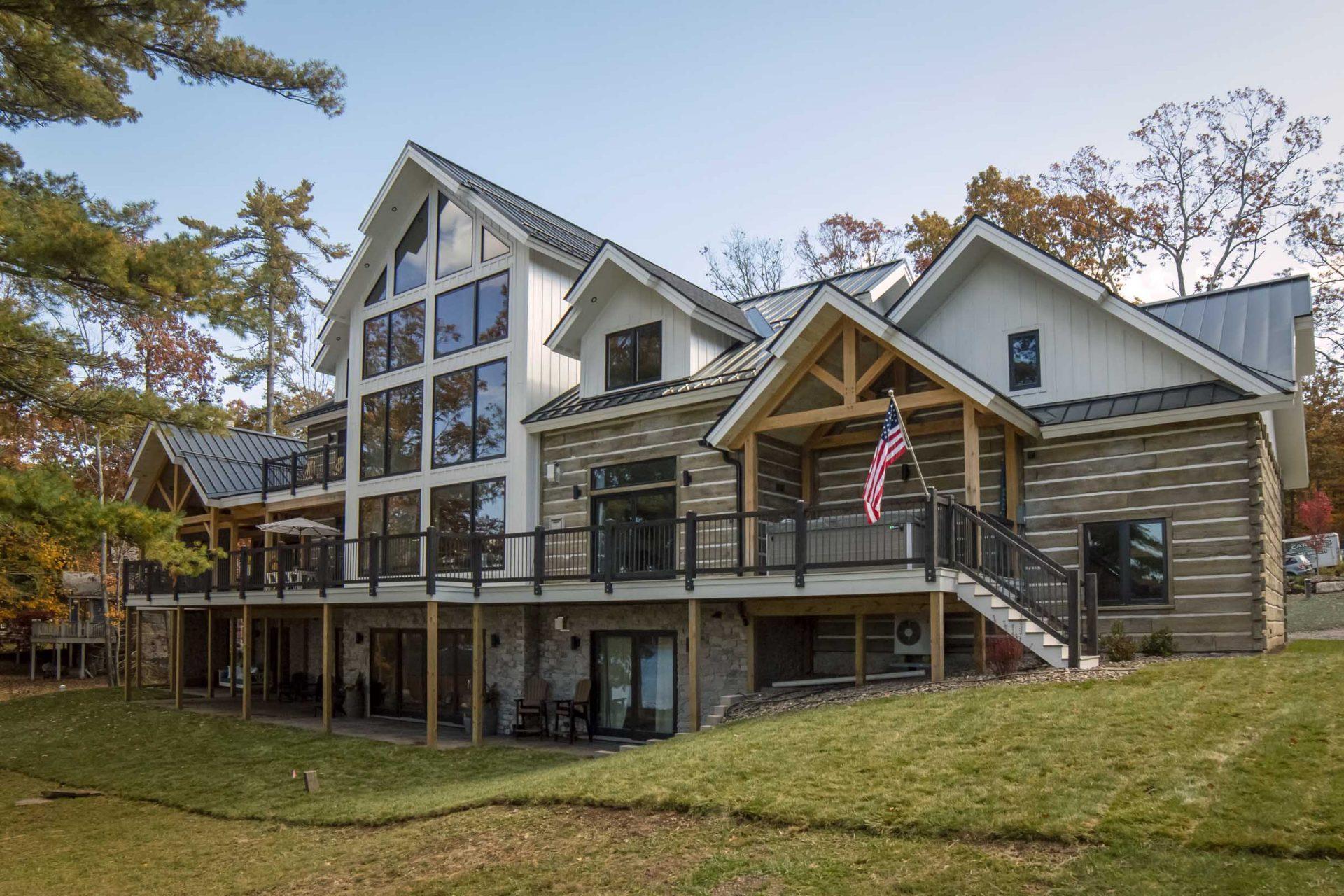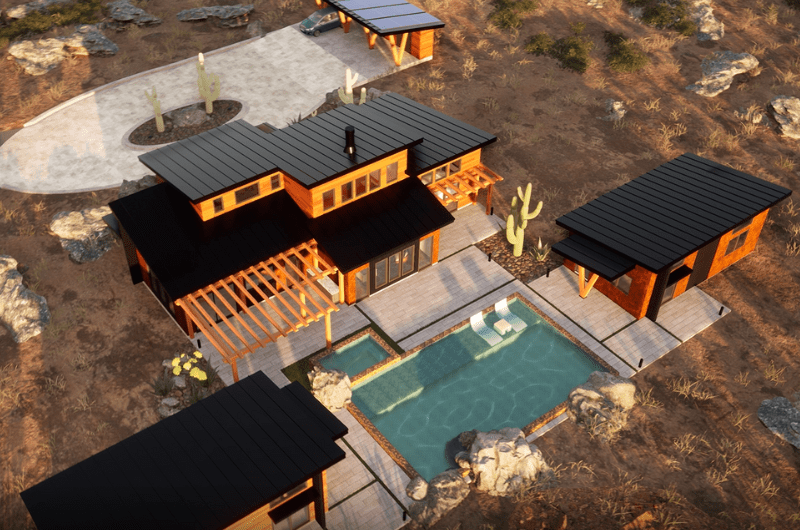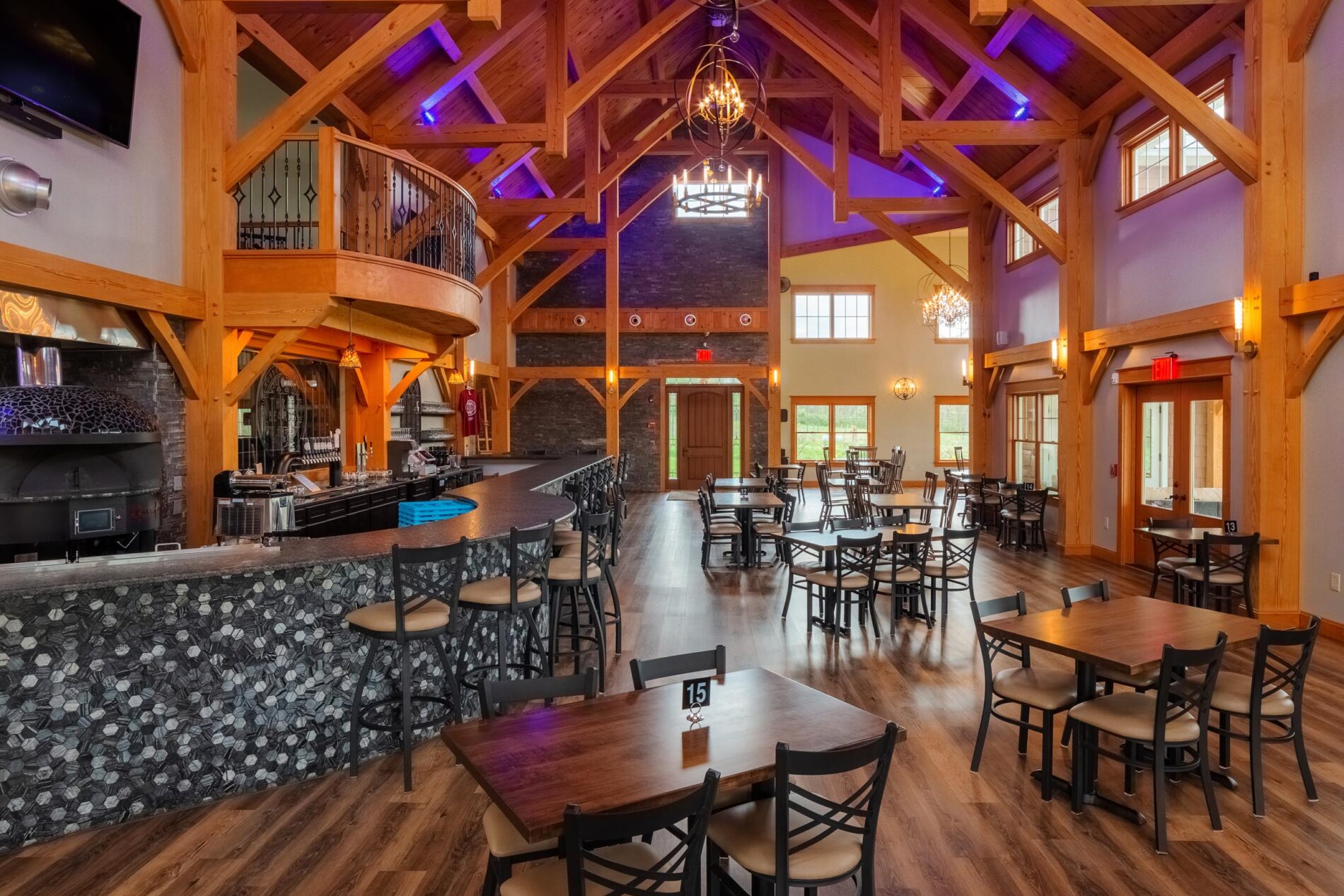Consider how a timber frame home adds an appreciating asset to your investment portfolio.
In an ever-changing economy, investing in tangible assets is one way to diversify your portfolio and help insulate yourself against the stock market’s inevitable ups and downs. That being said, not all assets are the same, and any large purchase should be assessed for its financial impact—smart buyers know this well. Some purchases, like real estate and homes, historically appreciate, while others, such as boats, new cars, and RVs begin to depreciate the moment the sales transaction is complete.
Even among appreciating assets, some carry a higher return on investment than others. Certain homes, like timber frames, have increased their value over time at a rate typically higher than their conventional counterparts. In addition to the uniqueness of the home itself, building a timber frame home has several features baked into the process that make them smart, calculated investments. Here’s what to know.
Real Estate
Building a custom timber frame home involves buying your own land. This is a chance to really assess your own appetite for risk as you factor in property values as well as timber frame home plans and prices.
Timber frame homeowners tend to gravitate toward desirable vacation destinations or other gorgeous spots in pristine forests, along shorelines, nestled into the countryside, or perched on mountainsides. You’ll even see timber frames in urban locales, standing out with stunning curbside appeal and sophisticated, modern designs. Choosing the right spot can yield tremendous appreciation. When you factor in the trend of people moving to more rural destinations and working remotely, investing time and money into the right location and floor plan can really pay off.
Woodhouse President and Owner Pat Seaman explains further: “Typically—even during an inflationary period—at the end of the construction process, the client already has positive equity because most timber frames are built in desirable locations with some kind of amenity, and they are differentiated from the run-of-the-mill real estate market by their distinct beauty.”
Plus, our process has peace of mind built-in. Your Woodhouse Regional Project Manager (RPM) or Independent Representative can go with you to assess any property that you are considering for the home you desire.
Streamlined Construction
It’s true that timber frame homes tend to be more expensive up front than an equivalent conventional stick frame, but the timber frame home will tend to have a 15-18% higher value. This valuation is due to the materials and a streamlined construction process.
We manufacture the timbers for a kit at our headquarters and support building anywhere in the country. When it comes time to erect the frame, timbers and panels are lettered and numbered for an efficient build process that saves you money and ensures quality construction. Every timber frame project consists of a Woodhouse tech representative working closely with your general contractor so there are no delays between the timber home kit delivery and when construction begins.
Elevated Envelopes
Unlike a stick-frame home, a timber frame structure allows for the use of structural insulated panels, or SIPs. These panels insulate the home and are superior to the stick lumber and fiberglass used in conventional homes for a variety of reasons:
With some of the highest energy efficiency available in a residential building, SIPs pair with passive solar heating to provide energy savings for the life of the home. In a timber frame, sweltering summers and frigid winters no longer equate to high energy bills. SIPs also provide a Class 1 fire performance rating, making them highly fire-resistant, a valuable feature in environments where wildfires are a concern. Finally, there is an acoustical advantage with SIPs, resulting in a quiet, peaceful retreat for timber frame homeowners.
Low Maintenance
People often equate timber frame homes with log homes, which are notorious for their high maintenance demands. A timber frame’s maintenance requirements are no more than that of a conventional home. Depending on its placement on the property and additional material selections, a timber frame can require even less!
Unlike conventional fiberglass insulation, the performance of SIPs does not diminish over time and the large timbers establish a longevity and durability that can last for generations. These low-maintenance benefits save homeowners both time and money.
Exit Opportunities
Timber frames offer dreamy places to live and elevate the vacation experience. As such, one huge benefit of investing in a timber frame is their ability to provide an exit or alternative revenue opportunities:
- Sell. As mentioned, a timber frame’s value typically appreciates.
- Vacation rental. Often located in coveted locales with strategic floorplans, timber frames are popular rentals.
- Lease. Timber frames make excellent family compounds. You can lease a living pod attached to the main home or an accessory dwelling unit (ADU).
- Legacy home. The timeless nature and beauty of a timber frame makes them family heirlooms.
Commercial Investment
For many of the reasons a timber frame makes a smart investment as a residential structure, they make an excellent choice as commercial buildings. Energy efficiency, custom design, and timeless appeal — there are many ways a timber frame can help improve the profitability of a business. We’ve built timber frames as grocery stores, banks, restaurants, and much more!
Smart Start
Begin assessing timber frame home plans and prices with our Dream Home Budget Calculator, and reach out to Woodhouse with your ideas and questions.
